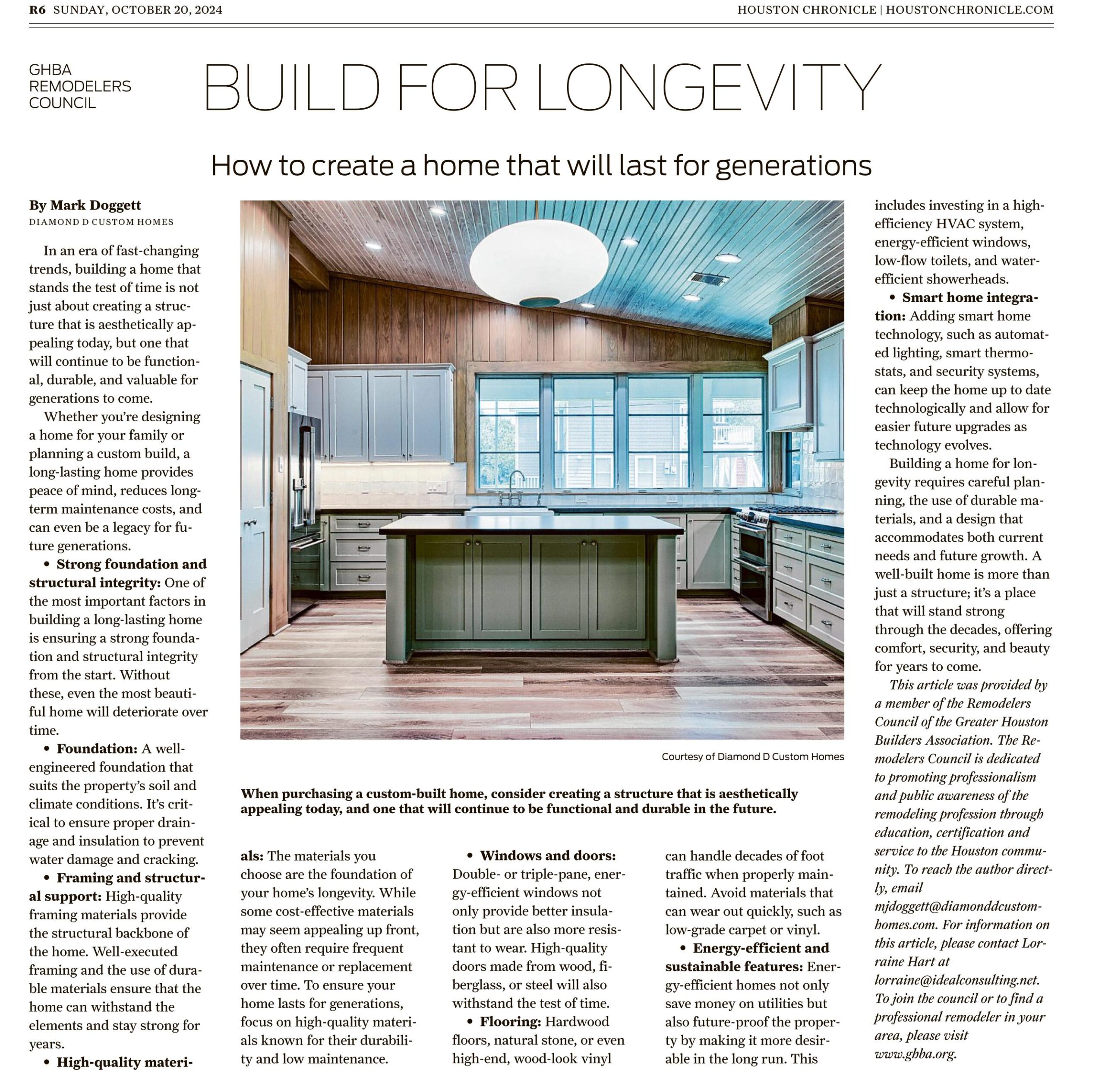Home Building for Longevity

This article was written by Mark Doggett and published in the October 20, 2024 Sunday edition of the Houston Chronicle.
In an era of fast-changing trends, building a home that stands the test of time is not just about creating a structure that is aesthetically appealing today, but one that will continue to be functional, durable, and valuable for generations to come. Whether you’re designing a home for your family or planning a custom build, a long-lasting home provides peace of mind, reduces long-term maintenance costs, and can even be a legacy for future generations.
Strong Foundation and Structural Integrity
One of the most important factors in building a long-lasting home is ensuring a strong foundation and structural integrity from the start. Without these, even the most beautiful home will deteriorate over time.
Foundation
A well-engineered foundation that suits the property’s soil and climate conditions. It’s critical to ensure proper drainage and insulation to prevent water damage and cracking.
Framing and Structural Support
High-quality framing materials provide the structural backbone of the home. Well-executed framing and the use of durable materials ensure that the home can withstand the elements and stay strong for years.
High-Quality Materials
The materials you choose are the foundation of your home’s longevity. While some cost-effective materials may seem appealing upfront, they often require frequent maintenance or replacement over time. To ensure your home lasts for generations, focus on high-quality materials known for their durability and low maintenance.
Windows and Doors
Double or triple-pane energy-efficient windows not only provide better insulation but are also more resistant to wear. High-quality doors made from wood, fiberglass, or steel will also withstand the test of time.
Flooring
Hardwood floors, natural stone, or even high-end wood-look vinyl can handle decades of foot traffic when properly maintained. Avoid materials that can wear out quickly, such as low-grade carpet or vinyl.
Energy-Efficient and Sustainable Features
Energy-efficient homes not only save money on utilities but also future-proof the property by making it more desirable in the long run. This includes investing in a high-efficiency HVAC system, energy-efficient windows and low-flow toilets, and water-efficient showerheads.
Smart Home Integration
Adding smart home technology, such as automated lighting, smart thermostats, and security systems, can keep the home up to date technologically and allow for easier future upgrades as technology evolves.
Building a home for longevity requires careful planning, the use of durable materials, and a design that accommodates both current needs and future growth. A well-built home is more than just a structure; it’s a place that will stand strong through the decades, offering comfort, security, and beauty for years to come.
